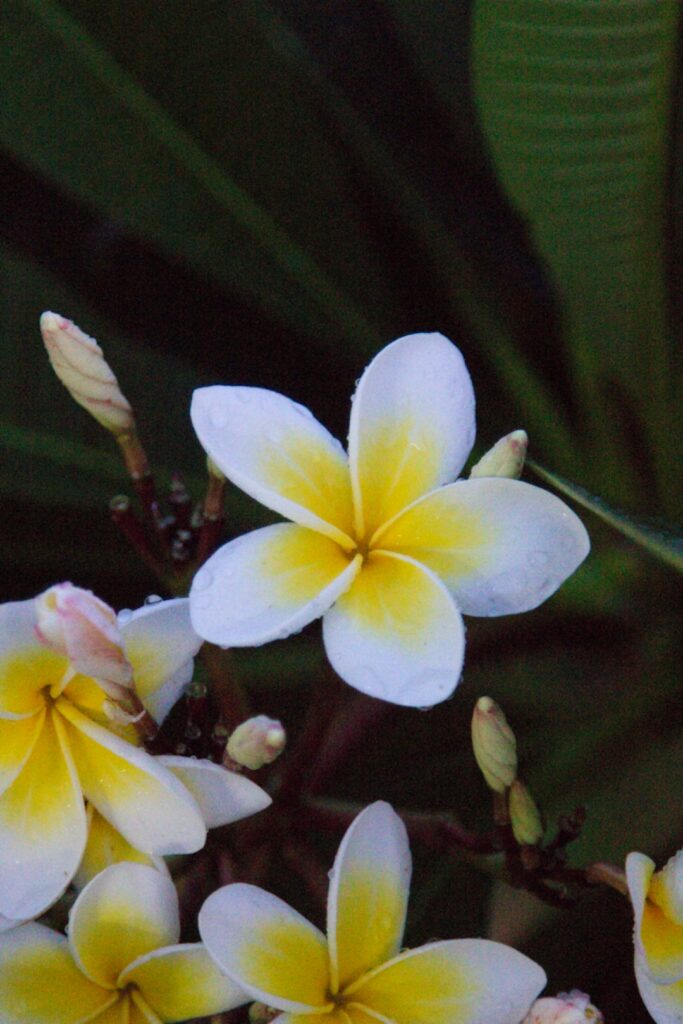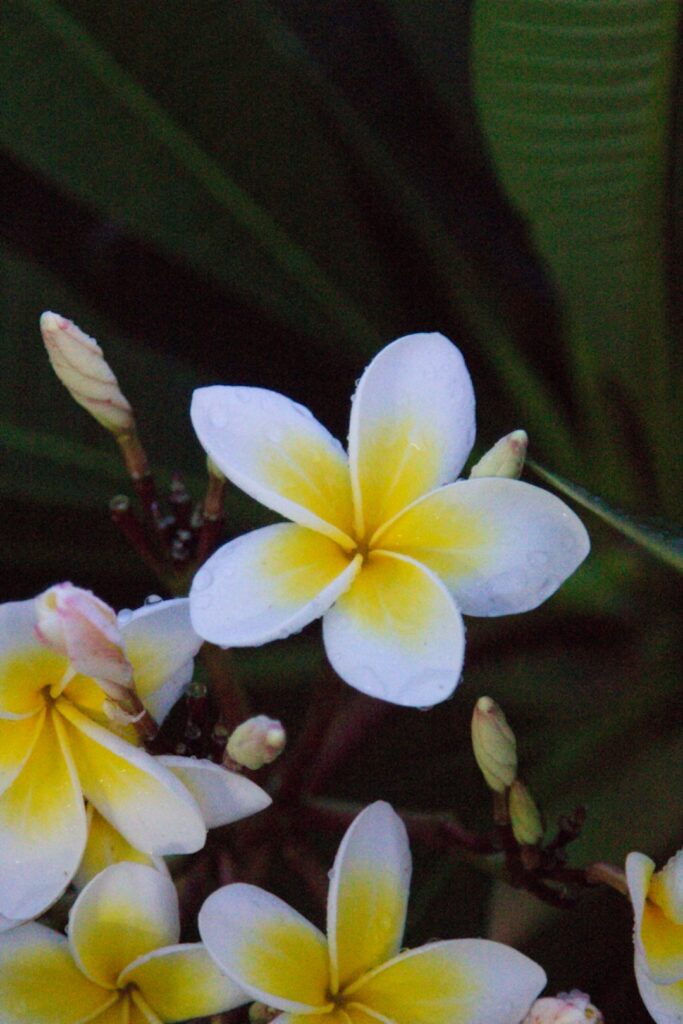
Nick Hubbard, CC BY-SA 2.0
Laos
Frangipani
Plumeria

Nick Hubbard, CC BY-SA 2.0
General Description / Cultural Significance
Laotians have always considered the country’s national flower, Frangipani (Plumeria), commonly called “Dok Champa,” as the scent that represents their native Laos. Frangipani is a tropical flower with a powerful and sweet scent that permeates the air throughout the country. Because of its exotic floral fragrance, the Frangipani is a key ingredient in various perfumes and colognes. The Dok Champa grows in red, pink, yellow, and white with five petals and a yellow center.
The blooms of frangipani are at their height during the rainy season, which is from June to July. The scent of the flower is strongest at night when it lures its primary pollinator, a moth, with its color and sweet smell. The people of Laos associate its intoxicating smell with the evening and rest. People in Luang Prabang make a point to take an evening stroll during sunset, so they can enjoy the fragrance of the blossoms.
Though not originally native to Laos, Frangipani is a sacred cultural symbol. The plant is found throughout the country decorating monasteries and other holy sites with many monasteries growing Dok Champa themselves. The Frangipani also plays a role in Buddhifrangiponst baci ceremonies, a ritualistic practice designed to boost the spirits of the person it’s being performed on, as Dok Champa necklaces are placed on the guests as they arrive for the service.
Dok Champa, though, is not just reserved for religious and important visits. To the people of Laos, the flower represents luck, joy in life, and sincerity. The name “Dok Champa” itself, embodies the spiritual value of the plant and is used by corporations, stores, and shops to bring goodwill and good business, so one sees the name everywhere. It may be a flower recognized for its scent and beauty, but it is also the backbone of a Laotian mindset.
Climate Change / Conservation Status
Frangipani grows almost everywhere in Laos. It thrives off the country’s warm and tropical climate and does not look to be stopping soon due to the greenhouse effects of climate change. Different issues aside from heat, though, arise from climate change in the coming future. The World Health Organization announced in August of 2023 that by 2050 the south of Laos could receive upwards of 30% more rainfall. This could prove difficult for mature Frangipanis who need their soil to dry between watering spells.
Furthermore, the predominantly agricultural population of Laos is in grave trouble as flooding, rising temperatures, and droughts look to dwindle crops and food sources in the country.
Alternate Names
Dok Champa
Sources
(n.d.). Baci Ceromony. Laos Guide 99. https://www.laos-guide-999.com/baci-ceremony.html
Seal, W. (n.d.). Lao PDR officials tackle the effects of climate change on health. World Health Organziation. https://www.who.int/laos/news/detail/08-08-2023-lao-pdr-officials-tackle-the-effects-of-climate-change-on-health#:~:text=Lao%20PDR%20is%20particularly%20vulnerable,rainfall%2C%20particularly%20in%20the%20south
Original Statement provided by the Mission of Laos People’s Democratic Republic to the United Nations on the original World Sensorium Website.

